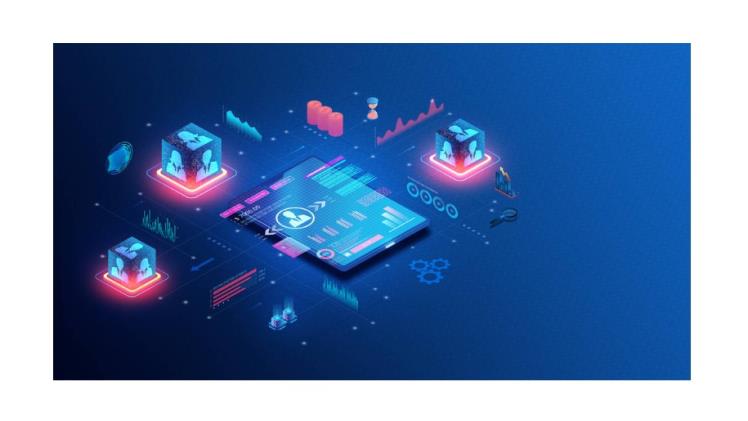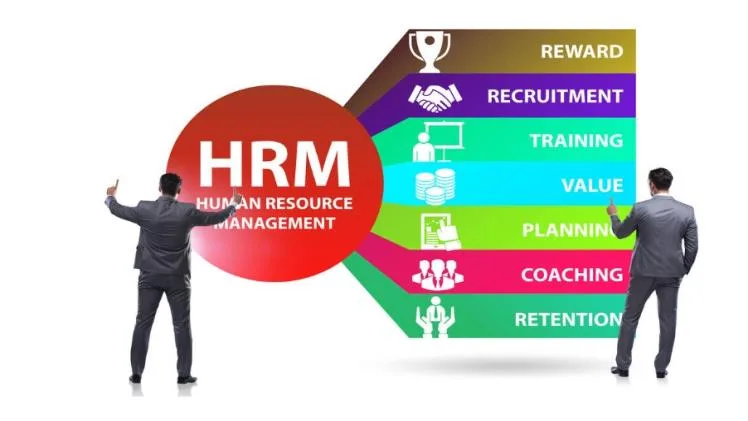In today’s fast-paced digital landscape, businesses are constantly seeking innovative ways to enhance efficiency and streamline their operations. In this pursuit, Human Resource Management (HRM) software has emerged as a powerful tool, revolutionizing the way organizations manage their most valuable asset: their employees. This article delves into the world of HRM software, dissecting its key features and elucidating its multifaceted benefits. Brace yourself for a journey through the complex terrain of HR technology, where the intricacies of automation, accuracy, and engagement reign supreme.
Definition of HRM Software
At its core, HRM software is a sophisticated solution meticulously crafted to streamline and automate the labyrinthine management of employee information. It unfurls a comprehensive suite of tools and capabilities, offering organizations the means to orchestrate their HR operations with unparalleled finesse. From the intricacies of recruitment to the nuances of onboarding, from the rigours of performance management to the labyrinthine world of payroll and benefits administration—HRM software Singapore is a veritable Swiss Army knife for HR professionals.
Beyond these fundamental functions, HRM software often stretches its boundaries, providing a pantheon of features that transcend the mundane. Picture this: analytics engines that dissect workforce trends with the precision of a surgeon’s scalpel, or learning management systems that open doorways to a world of training opportunities for employees. In this digital age, HRM software is the architect of efficiency, the gatekeeper of accuracy, and the harbinger of engagement.
Benefits of Using HRM Software
As the global business arena becomes increasingly competitive, organizations face the imperative of optimizing their human resources. The modern workforce is a complex tapestry of skills, talents, and personalities, and HRM software is the loom that weaves it into a harmonious symphony. Here’s a panoramic view of the key benefits that await those who embrace this revolutionary technology:
Automation & Streamlining of Processes: With the deft touch of automation, HRM software metamorphoses tedious, time-consuming processes into graceful ballets of efficiency. Picture the arduous task of payroll calculations or the labyrinthine journey of employee onboarding—HRM software breathes life into these operations, turning them into seamless, automated workflows. This liberation from the shackles of manual processes bestows businesses with the gift of time—time to focus on core operations, innovate, and propel their growth. Moreover, the meticulous precision of automation ensures that data remains accurate, up-to-date, and scrupulously compliant with the tapestry of laws and regulations that govern the modern workplace.
Improved Accuracy & Efficiency in Data Management: Imagine a world where every scrap of employee data—performance reviews, training records, attendance—is at your fingertips. HRM software grants this wish with the wave of a digital wand. It consigns the era of rifling through paper files to history’s annals, making data retrieval as simple as typing a query into a search bar. Mistakes born of manual entry become fossils of the past, as the software’s automation takes center stage. Personalized dashboards adorn the desks of managers, presenting real-time snapshots of employee performance metrics. Armed with these insights, managers navigate the labyrinth of personnel management with unparalleled precision and insight.
Increased Employee Engagement & Productivity: Within the hallowed halls of HR departments, HRM software unleashes a revolution. Administrative tasks, once a burden on the shoulders of HR teams, now dance to the tune of automation. Employees find themselves liberated from the mundanity of paperwork, free to channel their energies into projects that matter. Automation fuels engagement, as teams focus on initiatives that drive growth and innovation. The result? A workforce that thrives, fueled by the power of technology.
Features of HRM Software
The tapestry of HRM software is woven from a myriad of threads, each representing a feature designed to empower HR professionals and transform the way they manage their workforce. Here, we dissect three core features that form the backbone of HRM software:
- Applicant Tracking System (ATS): In the grand theatre of recruitment, the Applicant Tracking System (ATS) takes centre stage. This feature enables employers to track applicants as they journey through the intricate recruitment process. Resumes and job applications, once strewn across the digital landscape, find a haven within the organized confines of ATS. Automated tools stand ready to screen resumes, track job postings across an array of platforms, schedule interviews with candidates, and manage feedback from hiring managers. ATS transforms recruitment into a well-orchestrated symphony, where efficiency and precision are the conductors.
- Performance Management System (PMS): The Performance Management System (PMS) emerges as a potent tool in the hands of HR professionals. With PMS, organizations gain the power to evaluate employee performance on multifarious aspects, from goal setting and tracking to attendance and skill development. Trends in employee performance become apparent, guiding HR professionals in their quest to nurture talent and drive growth. PMS operates as a beacon, illuminating the path to continuous improvement.
- Payroll Management System (PMS): The Payroll Management System (PMS) is the guardian of financial harmony within organizations. It eliminates the cacophony of manual payroll calculations, replacing it with the dull tones of automation. Calculations, deductions, and disbursements become seamless, ensuring that employees receive their dues with punctual precision. PMS ensures that the delicate dance of payroll remains error-free and compliant with the myriad regulations that govern it.

Conclusion
In the grand tapestry of the modern workplace, HRM software emerges as an indispensable thread, weaving efficiency, accuracy, and engagement into the very fabric of organizations. It is the conduit through which businesses navigate the labyrinthine world of HR operations, emerging on the other side with newfound efficiency and insight. HRM software is not merely a tool; it is a strategic asset, a key player in the quest for success in the digital era. Its transformative capabilities empower organizations to seize the future with both hands, nurturing their most valuable asset—their employees—on the journey to excellence. HRM software is not just an evolution; it is a revolution.



